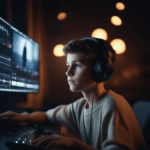
AI has become a revolutionary force across various industries, bringing about a significant transformation by introducing operational paradigms that are more efficient. The range of AI tools and technologies available is vast, including Natural Language Processing models and Machine Learning algorithms, each with unique capabilities and specific uses. This diversity of technology provides a wide array of possibilities but also requires careful selection to ensure that it aligns with the given task.
As industries increasingly adopt AI, it is our responsibility to ensure that the AI tool we choose is in line with our task goals. Failing to do so could lead to underutilization of resources, subpar results, and even counterproductive outcomes.
Designing a Pathway for Effective AI Tool Selection
The field of AI offers a broad range of tools capable of processing and analyzing different data types, including text, image, audio, and video. The selection of an AI tool is contingent upon a clear understanding of the task objective and the nature of the data at hand. This alignment ensures efficient utilization of AI capabilities and paves the way for successful outcomes.
- Understanding task objectives: Defining the task objective involves identifying the problem to solve, understanding the desired outcome, and outlining the key performance indicators.
- Recognizing data types: Different AI tools are designed to handle different data types. Text-based data is best handled by Natural Language Processing (NLP) tools, images by computer vision algorithms, audio data by speech recognition and processing tools, and video data often requires a combination of computer vision and audio processing algorithms.
AI Tools for Generation Tasks
Generation tasks in the context of AI refer to tasks where the AI system is required to create or generate output based on the given inputs. This output can be in various forms and is typically new content that the AI has synthesized based on the data it has been trained on.
Text Generation
Text generation is a subfield of Natural Language Processing (NLP), which involves the automated creation of text.

Application: Blog posts, Articles, and other written content.
Thus significantly reducing the time spent on these tasks. This allows human creators to focus on strategy and creativity, where they excel.
🛠️ Tools: ChatGPT, Bard, Jasper.
Image Generation
Image generation refers to the process of creating new, synthetic images that can resemble real-world photos, drawings, paintings, or other types of images.

One of the most common methods used in generative AI for image generation is a type of model called a Generative Adversarial Network (GAN). GANs consist of two parts: a Generator network, which creates new images, and a Discriminator network, which tries to distinguish the generated images from real ones.
Application: New pieces of art; Textures, objects, characters, or entire landscapes; Clothing designs; Designs for buildings, interior spaces, and urban layouts.
AI can generate image output based on specific styles or themes, creating unique visuals for use in digital media. Output contributes to more immersive and visually appealing experiences and supports the development of fresh perspectives and options.
🛠️ Tools: DALL-E, MidJourney, Stable Diffusion.
Audio Generation
Generative AI models for audio generation are designed to create new, synthetic audio content from given data or learned patterns. This can encompass a variety of applications, including music, speech, sound effects, and more.

Application: Music generation, Sound effects, Speech synthesis, and Voice cloning.
Generative AI models can be trained to create music in specific styles or mimic certain composers based on the training data. The result can range from simple melodies to complex symphonic pieces. Models can generate synthetic sound effects that mimic real-world sounds, like rain, traffic, or animal noises. They can take written text as input and generate an audio stream that sounds like a human reading the text. Some generative models can learn the characteristics of a specific person’s voice and then generate new audio that sounds like that person speaking.
🛠️ Tools:
- Music generation: Amper, AIVA, Soundful.
- Speech synthesis: Amazon Polly, Google Cloud Text-to-Speech, Microsoft Azure Text-to-Speech.
- Sound effects: AudioMicro, Zapsplat, Freesound.
- Voice cloning: Respeecher, Coqui, ElevenLabs.
Video Generation
Video generation is a field in generative Artificial Intelligence (AI) that focuses on creating new video content based on learning from a set of input videos. In a sense, video generation AI is tasked with understanding the semantics, structure, and patterns within a collection of videos and then generating new videos that adhere to the same or similar principles.

The creation of new videos can be conditioned on a variety of inputs, such as a short description, a script, a rough sketch or storyboard, or even other videos.
Application: Animation, Deepfakes, Simulations, and other visual art.
AI can generate new scenes or modify existing ones, allowing for easier creation of animation and special effects. For example, it could fill in gaps in footage, generate background scenery, or create entirely new animated sequences.
Deepfakes presents a more controversial application where AI generates realistic images or videos of people, often used to create the illusion that the person is doing or saying something they did not. While it has potential for misuse, it also has legitimate uses in film production, like creating digital actors or improving special effects.
AI can generate hypothetical scenarios for training purposes or simulate events based on observed data, aiding in prediction and prevention efforts. Such output is supporting areas from medical surgery simulations to virtual field trips, etc.
🛠️ Tools:
- Video generation: Synthesia, InVideo. Pictory.
- Animation: DeepMotion, Vyond, Adobe Character Animator, NVIDIA Omniverse Audio2Face.
- Simulations: Unity, Unreal Engine, Amazon Sumerian.
- Other: Magenta.